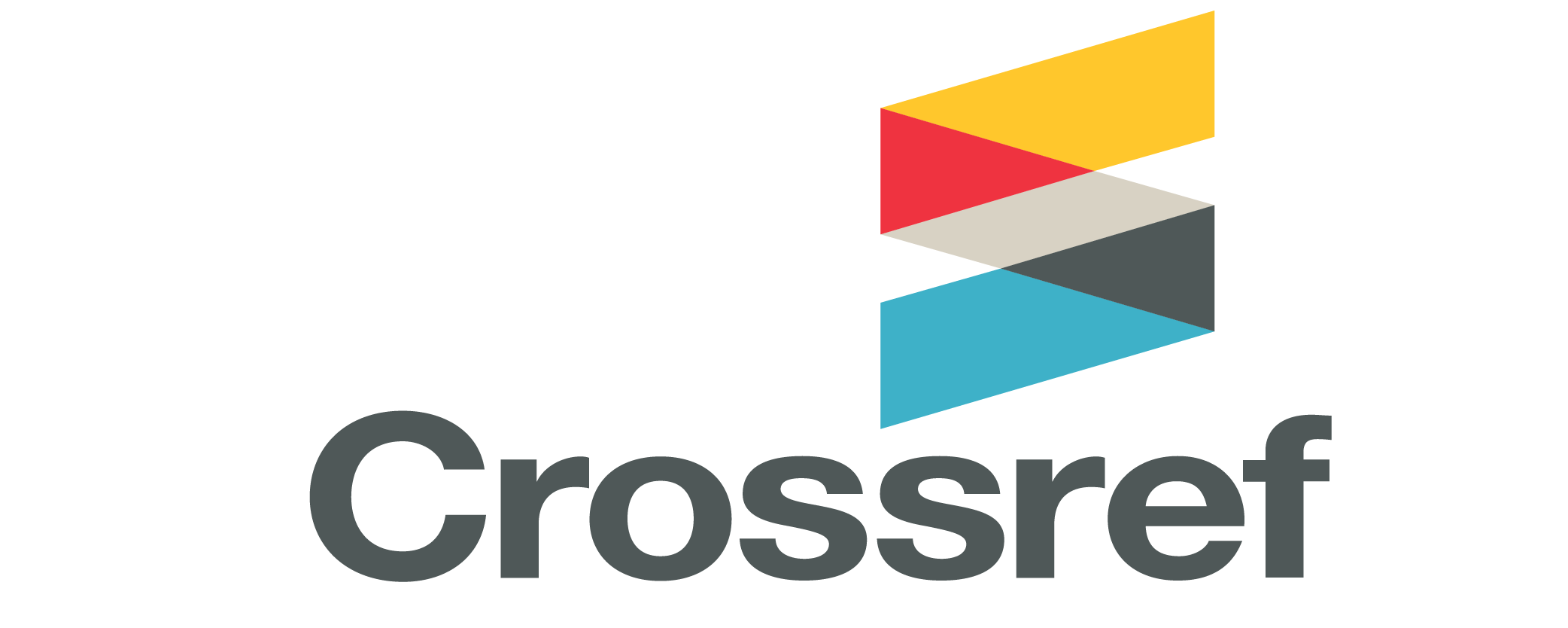Search
Search Results
-
Does foliar nutrition influence the pear fruit quality?
25-28.Views:218The influence of the foliar nutrition on the pear fruit quality (Pyrus communis L.) cv. 'Williams' was studied in years 1997 and 1998. We determined the contents of individual sugars (glucose, fructose, sucrose and sorbitol) and organic acids (malic, citric, fumaric and shikimic) by HPLC (High Performance Liquid Chromatography). The sizes of the fruits (diameter, length, weight) were measured as well as the amounts of soluble solids and titrable acids. The experiment comprised two treatments: the foliar nutrition and the control. In the treatment of foliar nutrition the trees were sprayed five times (from May 22 to July 7) with a foliar fertilizer, which contained 15% of P205, 20% of K20, 0.1% of Mn, 0.1% of B and 0.1% of Mo. The foliar nutrition influenced higher quantities of sugars (glucose, sorbitol, soluble solids) and organic acids (malic, citric) but had no effect on the contents of shikimic acid, pH juice and titrable acids. At the treatment of foliar nutrition a trend of decrease in the contents of fructose, sucrose, fumaric acid, boron, and zinc was noticed.
-
Influence of foliar nutrition on apple production
15-18.Views:229On the basis of different experiments the technology of intensive foliar nutrition was studied in apple orchards in the period from 1996 until 2000. Yearly apple nutrition programs based on soil analyses. The foliar nutrition program was prepared in accordance with the soil, fruit analyses and climatic conditions. If needed, certain improvements were made according to the analyses of leaves and precipitation in the current year. The richness of the soil and ratios between individual nutrients gradually improved. The foliar nutrition influenced the yield quantity, quality and flower bud differentiation. The yield was doubled and the mean of five years reached 70 tons per hectare. In spite of high yields there were no problems with alternative bearing. The analyses of soluble solids, firmness, fructose, glucose, sucrose, malic acid, citric acid in the fruits and mineral soil composition indicated that the produced fruits were of high quality despite greater yields.
-
Effect of maturity stage on content, color and quality of tomato (Lycopersicon lycopersicum (L.) Karsten) fruit
41-44.Views:706Soluble solids (Brix°), carbohydrate, organic acid, lycopene, polyphenols and HMF content of indeterminate round type tomato Lemance F1 fruits were measured in six ripeness stages from mature green to deep red stage. Color of fruits was determined by CIELab system. The L*, a*, b* values were received directly and used to calculate from which the a*/b* and the chroma were calculated. The Brix', carbohydrate, lycopene and HMF content were the highest in the 6111 stake (deep red). Carbohydrate contents constitute nearly 50% of the Brix°. The mature green stage had the lowest acid content but in subsequent stages it was fundamentally unchanged. Polyphenol content changed little during fruit ripening. Lycopene content changed significantly during maturation and accumulated mainly in the deep red stage. Analyses showed that a*/b* was closely correlated with lycopene and can be used to characterize stages of maturity in fresh tomatoes.
-
Effects of irregular cropping on nutrient uptake and status of apple trees
41-44.Views:631Produce of harmonic nutrient balance and status of trees is basic task of growers for qualified fruit growing. The role of crop loaded is essential to grow the productivity of trees without nutrient disorder or other nutritional problems. To reduce the frequency of biennial bearing there are some ways (site and species selection, crop regulation, irrigation, nutrition etc.) from them one is the best easy way the proper site and species oriented nutrition. Sometimes the responsible for irregular cropping is the insufficient fertilization. Observed irregular cropping at two apple cultivars (Malus domestica Borkh., cv. ‘Summerred’ and cv. ‘Mutsu’) in an integrated apple orchard at Hajdúnánás-Tedej, in 2007 resulted a chance to determine nutritional status of “bearing” and “non bearing” trees and investigate the effects of irregular cropping on nutrient uptake and possibilities of correction. Our results pointed out that irregularity is connection on nutrition status of trees. Irregular cropping results in insufficient nutrient uptake and disharmony of nutrients. For this reason, the establishment of nutrient status of “non bearing” trees is could permit a chance to correct and improve the nutrient supply of trees which help to breakdown the vicious circle of irregularity.
-
Effect of Foliar Nutrition on Post-Harvest of Onion Seed under Sandy Soil and Saline Irrigation Water Conditions
85-92Views:367Foliar application has been determined to be an effective nutrients delivery strategy in vegetable and fruits. The enhancement of vegetable and fruit yields affected by foliar nutrients application has been recognized in previously conducted studies with perennial tree crops. The efficiency of foliar nutrition is dependent on soil, climate, fertilizer and the amount of nitrogen used. There is no sufficient information concerning cooperation of foliar nutrition with all nutrients form as well as the rates of these nutrients fertilization in vegetable
and fruit crops. Two successive winter seasons of 2008/2009 and 2009/2010 were conducted under sandy soil conditions to study the effect of spraying with 12 commercial compounds on inflorescences diameter, flower stalk length, number of seed stem /plant, weight of 1000 seed, germination percentage, seed yield, moisture content, catalase , peroxidase activity and malondialdehyde content of onion seeds. The plants
sprayed with union Zn, union Mn, union feer, shams k, elga 600, boron, and amino x had the highest vegetative growth parameter, germination percent and enzyme activity. The plants sprayed with union Zn, union feer, shams K, magnesium, caboron, hummer and amino X had the highest seed yield ha-1. The seeds were stored for one year to study the effect of different commercial compounds and storage temperatures on germination, moisture content and change in antioxidant enzymes activities of onion seeds during the storage period. Storage at cold temperature showed higher germination percent, moisture content and lower malondialdehyde content than storage at room temperature. The treatment with union Zn, union feer, union Mn, boron, elga 600, caboron, amica, hummer and amino x had the highest germination percent. -
Foliar Nutrition and Post-Harvest of Onion Seed: Effects of storage temperatures, storage period and foliar nutrition
29-47.Views:436The aim of onion bulb storage is to meet consumer demand for extended availability of onions whilst maintaining product quality. The principal biological factors leading to onion bulb deterioration are respiration, resumption of growth and pathogen attack. In onion bulbs a dormant period, when sprouting and rooting cannot be induced, is followed by a period of internal changes that prepare the bulb for breaking of dormancy and subsequent growth. Out of storage, the bulb then proceeds towards flowering and seed production. Two successive winter seasons of 2008/2009 and 2009/2010 were conducted under sandy soil conditions to study the effect of spraying with 12 commercial compounds on yield and yield components of onion seeds and storage The seed yield of each commercial compounds plot from previous experiment was divided into two groups, storage under room temperature and 5°C. Seeds transferred immediately after drying to Increasing Export Competition of Some Vegetable Crops Project Laboratory located in Faculty of Agriculture, Cairo University. The effects of storage temperature, storage period and foliar with some commercial compounds on onion seed quality were considered. Storage in 5°C had the higher germination percentage than storage in room temperature. Results indicated that as storage period increased the germination percent decreased. The treatment with boron or amica in the first season had the highest germination percentage. While, the treatment with union Zn, union feer, union Mn, boron, elga 600, caboron, amica, hummer or amino X had the highest germination percentage in the second season. Storage in 5°C resulted in higher moisture content than storage in room temperature. Regarding the effect of storage period on moisture content, the water content was significantly increased with prolongation of storage period. The lowest values of water content were recorded for treatments with union feer, shams K or boron in the first season, and union feer, shams K, boron, magnesium, shetocare or hummer in the second one. Catalase activity was significantly decreased as storage period increased. The treatment with shams K, boron, shetocare or amino X had the highest catalase activity in both seasons. Peroxidase activity was significantly decreased as storage period increased. Foliar application with boron had the highest peroxidase activity in both seasons. Seed stored in room temperature had the higher malondialdehyde content than those stored in 5°C in the second season. The malondialdehyde content increased as storage period increased. The treatment with magnesium, caboron and the control in the first season, and the treatment with magnesium and the control in the second season had the highest malondialdehyde content.
-
The Hungarian peach production risks
85-89.Views:288Hungary possesses very good agroecological conditions even in a European comparison. Agriculture and food production is highly important despite its decreasing relative economic significance, since providing high quality and affordable food for the population is a basic social necessity and one of the decisive factors in quality of life. The development of vegetable and fruit production is of great importance both from a healthy nutrition as well as from a comparative advantage (cheap labour, expertise, production traditions, favourable climate) point of view.Vegetable and fruit consumption per capita is lower than in developed countries, which is a decisive indicator of healthy nutrition, but improvement is continuous and desired. Appropriate quality and quantity in production is a requirement to meet customers’ needs in a highly competitive market from one year to the next. Hungary can only be competitive if production results are improved while risks are reduced. Fruit production is a sector with high capital requirements, risk assessment is very important from a production, investment as well as from a national economy point of view. Our examinations will focus on production risk, which is present in the annual fluctuation of average yields, especially as a result of extreme weather factors.
-
Effects of a band application of polyolefin-coated diammonium phosphate on the nutritional quality of rhubarb and Swiss chard
39-42.Views:769Dietary intake of large amounts of nitrates and oxalates presents a health hazard. In this study experiments were conducted with two oxalate accumulating vegetables rhubarb (Rheum rhabarbarum L.) and Swiss chard (Beta vulgaris L. var. cicla L.)) using POC-DAP in order to improve their nutritional quality. In the rhubarb experiment oxalate content was significantly reduced by band application of POC-DAP, while effects on ascorbate and nitrate contents were ambiguous. The improved nutritional quality in the POC-DAP treatment was rather a cause of ammonium nutrition than a cause of less amount of released fertilizer nitrogen. In the Swiss chard experiment oxalate and nitrate contents were reduced, while ascorbate content was increased by a band application of POC-DAP. The improved nutritional quality in the POC-DAP treatment was the cause of both the less amount of released nitrogen and the realised ammonium nutrition. It was also found that by using POC-DAP for Swiss chard cultivation, labour and energy costs of top-dressings could be eliminated without yield decrease. It was concluded that the nutritional quality of rhubarb and Swiss chard could be improved by using a band application of POCDAP.
-
The effect of different berries in human nutrition
147-151.Views:382The aims of this study were on the one hand to compare of examined compounds according to their importance in nutrition and human-health, and on the other hand we made preexperiments to investigate the relationships among antioxidant capacity and the endogenous substances which contribute the antioxidant status of the plants. The following species were involved in the experiment: raspberry, blackberry, black currant, elderberry and sour cherry. These fruits have potent health-promoting antioxidant power. Glucose, fructose, total phenol, formaldehyde and anthocyanin contents were determined in addition to ferric reducing ability. Our results reflected considerable differences in the measured parameters of the analysed species. In blackberries and elderberries the high antioxidant capacity is coupled with low carbohydrate content. Besides the formerly proven correlations between total phenol content, anthocyanin concentration and antioxidant capacity, these parameters also correlated with the measured formaldehyde concentrations, hereby we can follow the methylation /demethylation status of the plant.
-
Nutrition of the micropropagated fruit trees in vitro and ex vitro
43-46.Views:237Some experience or details are introduced in connection with the nutrient uptake of micropropagated fruit trees in the different phase of the in vitro or ex vitro development. It can be stated, that the plants during the micropropagation procedure are overfed. Special careful nutrient supply is necessary during the acclimatization.
-
Reducing nitrate content in lettuce using polyolefin-coated fertilizers
35-38.Views:207Pot experiments were conducted in order to investigate the effects of the controlled-release characteristic, nitrogen form and application method of polyolefin-coated fertilizers on the nitrate content and yield of lettuce (Lactuca sativa L.). Comparing broadcast application of polyolefin-coated urea (POCU) and urea at four fertilization levels, it was found that application of POCU decreased the nitrate content and increased the yield, due solely to its controlled-release characteristic. Comparing band applications of POCU or polyolefin-coated diammonium-phosphate (POC-DAP) to broadcast application of ammonium nitrate, it was found that a band application of both urea and ammonium containing polyolefin-coated fertilizers can decrease nitrate content in lettuce, without causing any significant yield decrease. This was a combined effect of the controlled-release characteristic and realized ammonium nutrition. Comparing effects of broadcast, band and spot applications of POC-DAP, it was found that nitrate content, was the lowest in the spot application treatment. However, considering both nitrate content and yield, band application was found to be the most effective application method.
-
Nutrition content of spent mushroom compost before and after utilization in vegetable forcing experiments
53-55.Views:311The Spent mushroom compost means the remained soil without sporophores after the productive.period. The leftover can't be used for mushroom growing again (Gy6r1i, 2001). Unfortunately spent musnroom compost still has bad judgment, as it would be garbage, but on the contrary it is a significant and valuable material, which is full of organic residue, a perfect soil structure improver, nutrition supplement and propagating medium. In our experiment we took the following mediums: control material with 50% flat moor peat and 50% high moor peat (Novobalt) content, 100% spent compost, 50% spent compost and 50% control medium, 25% spent compost and 75% control medium. On the day of plantation and after the forcing experiment we took sample from the control medium and from all mixtures.
-
Importance of boron in fruit nutrition
39-44.Views:1125Boron (B) is an essential micronutrient in plants especially in fruits. Despite of this fact there are very few information about its application, uptake and symptoms in Hungarian fruit growing sector. Nowadays we should consider the effects of weather conditions on soil B availability increasingly according to the climatic anomalies. Identifying of internal and external symptoms of plant parts (leaf, fruit) is help for growers to recognize the deficiency and excess symptoms in time. Methods and application rates of boron fertilization provide further information for growers to achieve qualify-oriented fruit growing among Hungarian conditions. The aim of this minireview is to focus on the importance of boron in fruit nutrition.
-
The effects of foliar nutrition containing various macro and microelements on the growth and development of young grafted walnut (Juglans regia L.) plants
33-37.Views:311The Stopgril liquido (S), a foliar fertilizer containing nitrogen, calcium and magnesium was used to improve the spring and the summer growth of grafted walnut plants in the second year of cultivation in the nursery. To accomplish early termination of vegetative growth and good lignification, the composed mineral fertilizer Hascon M 10 AD (H) containing phosphorous, potassium and microelements B, Mn and Mo was applied on the same plants. Four treatments (S, H, SH, C) were applied three times in a growing season. Their effects on the height and the basal diameter of the plants in the nursery depended on the starting height of the plants and the time of application. During the first growth period in the orchard, the number of developed buds on the plant, the circumference of the plants and their height were influenced by the treatment in the previous year in the nursery. According to the results obtained through the investigation, three applications of Stopgril + Hascon in the nursery per year can be recommended in order to obtain high enough and well lignified two-year-old grafted walnut plants.
-
Visualization of the Gas Chromatography/Mass Spectrometry Data of Muscat Ottonel Must and Wine Measurements
16-21.Views:347The lack of interpretation methods useful in evaluating the aroma-profiles of wines makes it necessary to thoroughly investigate alternative evaluation procedures. By adding three appropriate normal hydrocarbon standards to all sample extracts, measuring the Programmed Temperature Retention Indexes of the components and by normalizing the peak areas to that of the 1-alpha-Terpineol (in musts) or Benzeneethanol (in wines), the aroma features could be visualized. The relationship or identity of the aroma patterns could be deduced from the presence or absence of similar polygons in the -constellation-map" of the components.
-
Nutritional aspects of producing fruits organically
69-74.Views:646Recent interest to avoid use of agrochemicals in fruit growing to safeguard environmental and human health has stimulated interest in organic fruit production (OFP) all over the world. Organic production requires a holistic approach to agricultural ecosystem management. Because of the perennial nature of orchards, this is not a great departure from conventional orchard management, except that corrective techniques are limited primarily to naturally derived materials. Organic mineral nutrition management hinges on two principles: 1) practices that lead to the build up and maintenance of soil that is biologically active and high in organic matter; 2) supplementing the mineral nutrients provided by the soil with fertilizers from approved sources. Organic orchards should be sited on land with superior soils and preplant soil preparation to increase organic matter and correct any sub-optimal soil characteristics. For successful organic fruit growing the following statement should be considered:Weed management is critical to reduce competition for nutrients and water. Soil and leaf analysis provide the basis for correcting mineral nutrient deficiencies or imbalances in organic production. It may be necessary to use a number of strategies to supply mineral nutrients over the life of the orchard. The slower, natural methods applied require a management approach that is simultaneously patient and dynamic.
-
Ecological diversity of Hungarian medicinal and aromatic plant flora and its regional consequences
10-19.Views:306During the last century the medicinal and aromatic plant sector has became a successful part of the Hungarian Agriculture. Some of the national products have been accepted as a special Hungarian ones ("Hungaricum"), evaluated on the world market, respectfully. By the estimates the cultivation area of medicinal and aromatic plants increased up to 37,000-42,000 hectares and considerable amount — about 10, 000-15, 000 tonnes of dry biomass — are produced by utilisation of Hungarian indigenous flora, year by year.
In the present work ecological requirements of 97 collected and 55 cultivated medicinal and aromatic plants are characterised. Based on the analysis of -Ts (temperature regime values) about 63 per cent of cultivated species came from Submediterranean and Mediterranean type of habitat, originally, while the majority of collected plants (61.8 per cent of them) prefer the deciduous forest conditions. The differences between collected and cultivated species are appreciable too, if the distributions of their characteristic water regime ('W' values) are compared. The majority of cultivated species require dry (moderate dry) and fresh (moderate fresh) habitats, while the amplitude of water requirement of collected species is much more wide-ranging.
The regional specialisation of Hungary according to production of medicinal and aromatic plants is known from the beginnings of the 20th century. As a result of spontaneous process seven well-defined production areas were developed. The relationship between regions, their climatic conditions and spectrum of species produced there are analysed.
-
Appreciation of ethrel on ripening dynamic and on the content of ingredients in processing tomato (Lycopersicon lycopersicum (L.) Karsten) varieties
33-35.Views:301Tomato (Lycopersicon lycopersicum (L) Karsten) is an important crop cultivated in Hungary. Ethrel has been used to advance maturity and promote uniform ripening of processing tomato since 25-30 years in Hungary. The aims of the present study were 1) to evaluate the effects of two different ethrel concentrations on ripening rate, 2) to investigate lycopene content of different maturity stages, 3) to test the effect of ethrel on lycopene content. It is important to note that the experimental year (in July and August) was very rainy and cool. Ethrel was applied at two rates: 1500 and 3000 ppm. The results clearly indicate that Ethrel can be a useful and effective tool of maturity-enhancement, under present circumstances. Ripening concentration increased significantly by Ethrel. In spite of this, Ethrel treatments did not affect lycopene content of examined varieties significantly. The quality of tomato products are characterised by their lycopene content. Colour is highly important quality factor of food products. The range in lycopene contents from all samples evaluated was 48.7 to 113.0 mg kg-1 fresh weight. Also correlations between lycopene content and colour (a*/b*, and chroma) were investigated also.
-
Effect of foliar fertilization on leaf mineral composition, sugar and organic acid contents of sweet cherry
45-48.Views:716Influence of a three-year-long foliar fertilization on mineral composition of leaf, content of sugars (glucose, fructose, galactose and sucrose) and organic acids (citric, malic and fumaric acid) of sweet cherry (Prunus avium L.) fruits was studied. The experiment was conducted during 2005-2007 in West Hungary on mature cv. `Germersdorfi 3' grafted on Prunus mahaleb rootstock, planted in 1999. Trees spaced 7 x 5 m, and growing in a calcareous chernozem soil. Trees were foliar-fertilized with potassium (K) as KNO3 and calcium (Ca) as Ca(NO3)2. Potassium spraying was carried out 3 (K1) and 5 (K2) while calcium was applied at 3 (Ca 1), 5 (Ca2) and 6 (Ca3) weeks after full bloom. Beside fruit analysis, complete soil and leaf analysis were done to study the rate of nutrient uptake and its effects on fruit quality. Contents of nutrients of soil and leaf were determined by atomic absorption and spectrophotometric method, while sugars and organic acids in fruit were determined by HPLC. The applied treatments (except K1) had been increasing leaf K significantly compared to the control till ripening. Most of treatments had no significant effect on Ca content of leaf till ripening. From applied treatments only the boron treatments had significant increasing effect on contents of all examined sugars, compared the control. Furthermore, the effect of calcium spraying on the contents of organic acids was significant.
-
The main colouring substance and essential oil components of different carrot varieties
46-49.Views:315Investigating colouring components it was found that the p carotene being the most important from the point of view of nutrition constitutes about 60-70% of the total colouring material, whereas the ratio of a carotene is 18-34%.
Among the varieties having a short growing season the common incidence rate of the a and 13 carotene is very high (92.49 %), even a lower total colouring material content (178.02 ppm) results in bright orange red carrot roots.
The incidence of a and carotene represents, however, only 84.24% of the similar total colouring material value (171.74 ppm) measured in Nantais.
Among the storage varieties Fertődi vörös has the highest value of total colouring substance (213.04 ppm) from which the common proportion of the two carotene (a and (3) compounds amounts to 93.77%.
When testing the essential oil components the cariophyllen shows the highest incidence rate, which has a negative influence on the flavour materials of the carrot. Among the early varieties in Nantais Forto this quantity amounts to 24.08 ppm which is almost twice as much as the amount measured in Nantais. We found a similarly unfavourable quantity in %lords &ids (25.47 ppm).
Looking at the beta-pinen and 1-limonen of a bactericidal effect the quantity of l-limonen is higher (1.36 ppm on the average of the varieties). Among the varieties that have a longer growing season and which are suitable for processing Fertődi vörös is the best in terms of essential oil and colour content. Its beta-pinen content was above the average of this variety (1.12 ppm) while its 1-limonen content was considerably high (1.26 ppm).
-
Correlation between pigment contents and FRAP values in beet root (Beta vulgaris ssp. esculents var. rubra)
85-89.Views:447It is well known that beetroot quality is determined mainly by the red pigment content (betacyanins) and its uniformity of the root. The effect of the most important red pigment components (betanin). the total polyphenol content and antioxidants were studied in 20 beet root varieties. Antioxidants were expressed in FRAP (ferric reducing ability of plasma) values in pM/I.
Our results indicated a close correlation (r = 0.7799 and r = 0.7435. respectively) between betanin and total polyphenol contents of the root as well as between FRAP values.
Our measurements showed more than threefold differences in total antioxidant activity among varieties. the lowest value being 196.4 13M/1 and highest 702.57 pM/I. The corresponding betanin (16.3 and 57.8 mg/100 ml) and total polyphenol (37.5 and 85.5 mg/100 ml respectively) contents show similar differences. Based on our results it can be stated that varieties of higher betanin and poliphenol contents have higher antioxidant values as well.
Accordingly, the two compounds must have a role in the evolution of antioxidant effects.
-
Enzym Methods in Wine Analysis
67-70.Views:263In our laboratory for special determinations BOERINGER-MANNHEIM's enzyme-test combinations have been used for 10 years. Our present work deals with the practical aspects of the enzymatic determination of so important wine components like L-malic, L-lactic and citric acid, glycerol, D-gluconic acid, D-sorbitol, acetic aldehyde and D-glucose to D-fructose (G/F) ratio. Whenever possible, the results arc compared to the results of other methods (spectrophotometry, gas chromatography, polarimetry) used at our department.
-
Fruit drop: II. Biological background of flower and fruit drop
103-108.Views:749The most important components of fruit drop are: the rootstock, the combination of polliniser varieties, the conditions depending of nutrition, the extent and timing of the administration of fertilisers, the moments of water stress and the timing of agrotechnical interventions. Further adversities may appear as flushes of heat and drought, the rainy spring weather during the blooming period as well as the excessive hot, cool or windy weather impairing pollination, moreover, the appearance of diseases and pests all influence the fate of flowers of growing and become ripe fruits. As generally maintained, dry springs are causing severe fruit drop.
In analysing the endogenous and environmental causes of drop of the generative organs (flowers and fruits), the model of leaf abscission has been used, as a study of the excised, well defined abscission zone (AZ) seemed to be an adequate approach to the question. Comparing the effects active in the abscission of fruit with those of the excised leaf stem differences are observed as well as analogies between the anatomy and the accumulation of ethylene in the respective abscission tissues.
-
Effect of foliar spraying with algae suspension on leaf and fruit quality parameters of apple varieties
35-38.Views:1058Foliar nutrition experiment was made to investigate the effect of algae products on fruit quality of apples (Malus domestica Borkh.). The study was conducted in 2011 at Siófok inWest-Hungary on cv. ‘Jonagored’ and ‘Idared’grafted on M9 rootstock. In our trial leaf diagnostic and fruit quality measurements were made to study the effectiveness of applied products. Relative leaf chlorophyll content was determined by a portable chlorophyll meter. Fruit weight and shape index were measured. Fruit inner qualifying parameters like titratable acid content and Brix value were also determined. It can be stated that the used products had traceable effect on investigated fruit parameters. Although, leaf N content was not effected by treatments significantly, relative leaf chlorophyll content significantly increased by both treatments. Used products significantly increased the fruit weight and shape index. Applied treatments significantly decreased the pH of pulp. Treatments increased the acid contents (fumaric, citric, malic) of apples and decreased the amount of monosaccharides. It means that the applied treatments pushed out the ratio of acid/sugar.
-
Effect of frost damage on leaf macronutrient status of eight apple cultivars in integrated apple orchard in Eastern-Hungary
37-40.Views:4915The year of 2007 was critical for fruit growers in the region of Easter-Hungary. Several orchards were suffered frost damages. Significant frost damage was also happened in the orchard of Tedej Rt., which caused total fruit failure in the orchard. Our study was conducted in the integrated apple orchard (Malus domestics Borkh.) established on a lowland chemozem soil in East-Hungary, to investigate how frost changes the mineral content of different apple species. Leaf samples were collected 100 days after full bloom both in 2006 and 2007. The concentrations of nitrogen, phosphorous, potassium, calcium and magnesium were measured in leaves. The absence of fruits caused a smaller accumulation of nitrogen and magnesium in leaves. Falling down of flowers and fruit sets hindered the translocation of the uptaken phosphorous, potassium and calcium towards fruit sets. Due to fruit failure the vegetative processes became dominant. Leaves larger amount of phosphorous, potassium and calcium stored. Besides the absolute element content, the ratio of the different elements was also determined. Majority of calculated ratios were removed from optimal values due to frost. Both absolute content of nutrients and their ratios pointed out that the frost damage significantly affected the uptake of nutrients and their storing processes.










